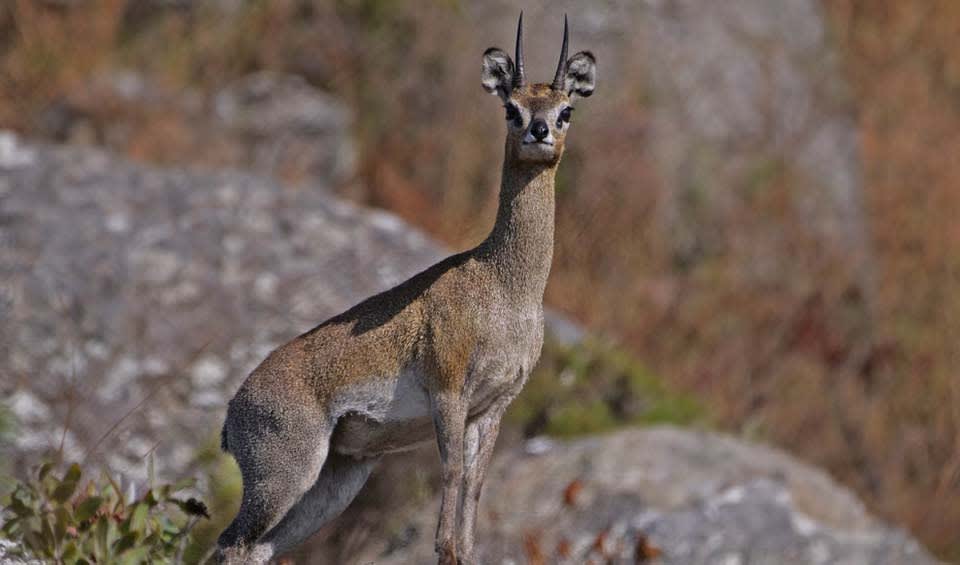A small, sturdy antelope that lives in the rocky hills and mountainous areas of eastern and southern Africa. With its compact body, short neck, and springy legs, the klipspringer is built perfectly for life on the rocks, where it often seems to defy gravity as it bounds effortlessly from one ledge to another.
One of the most remarkable things about the klipspringer is its hooves. Unlike most antelopes that have broad hooves for running on open plains, the klipspringer has short, cylindrical hooves that it uses almost like a ballet dancer on tiptoes. These specialized hooves allow it to balance on the very edges of rocks with surprising precision. Combined with a thick, dense coat of bristly fur that helps protect it from sharp stones and extreme temperatures, the klipspringer is a master of its harsh, vertical world.
Klipspringers are typically a speckled yellow-gray or reddish-brown, with white underparts and a short, fluffy tail. Their coloring provides excellent camouflage against rocky terrain, helping them avoid predators like leopards, eagles, and caracals. When alarmed, klipspringers will freeze or sound a sharp, whistling call before bounding away with high, stiff-legged jumps to escape.
Unlike many antelopes, klipspringers are monogamous. A male and female often form a lifelong pair and stay within a small territory together. They are rarely far apart—when one is feeding, the other often keeps watch, acting as a lookout for danger. This teamwork is essential in their exposed, mountainous habitat where predators can strike from above or below. Young klipspringers, once born, are usually hidden for the first few weeks in crevices or thick cover to avoid detection.
Distribution
 Angola
Angola Botswana
Botswana Burundi
Burundi Central Af. Rep.
Central Af. Rep. DR Congo (Kinshasa)
DR Congo (Kinshasa) Djibouti
Djibouti Eritrea
Eritrea Eswatini
Eswatini Ethiopia
Ethiopia Kenya
Kenya Lesotho
Lesotho Malawi
Malawi Mozambique
Mozambique Namibia
Namibia Nigeria
Nigeria Rwanda
Rwanda Somalia
Somalia South Africa
South Africa South Sudan
South Sudan Tanzania
Tanzania Uganda
Uganda Zambia
Zambia Zimbabwe
ZimbabweAnything we've missed?
Help us improve this page by suggesting edits. Glory never dies!
Suggest an editGet to know me
Terrestrial / Aquatic
Altricial / Precocial
Polygamous / Monogamous
Dimorphic (size) / Monomorphic
Active: Diurnal / Nocturnal
Social behavior: Solitary / Pack / Herd
Diet: Carnivore / Herbivore / Omnivore / Piscivorous / Insectivore
Migratory: Yes / No
Domesticated: Yes / No
Dangerous: Yes / No




